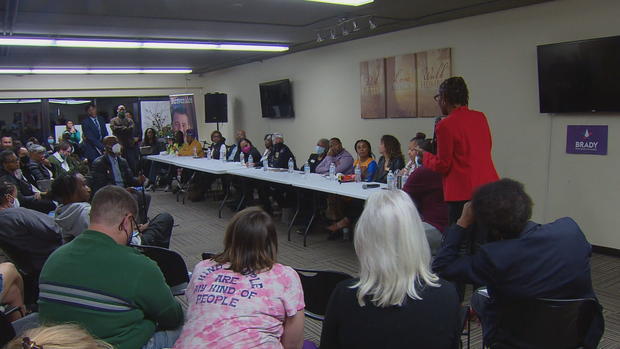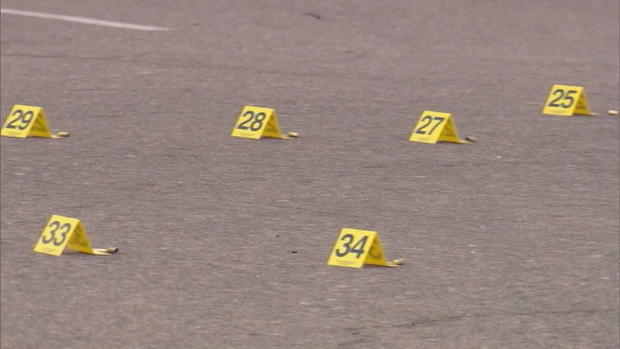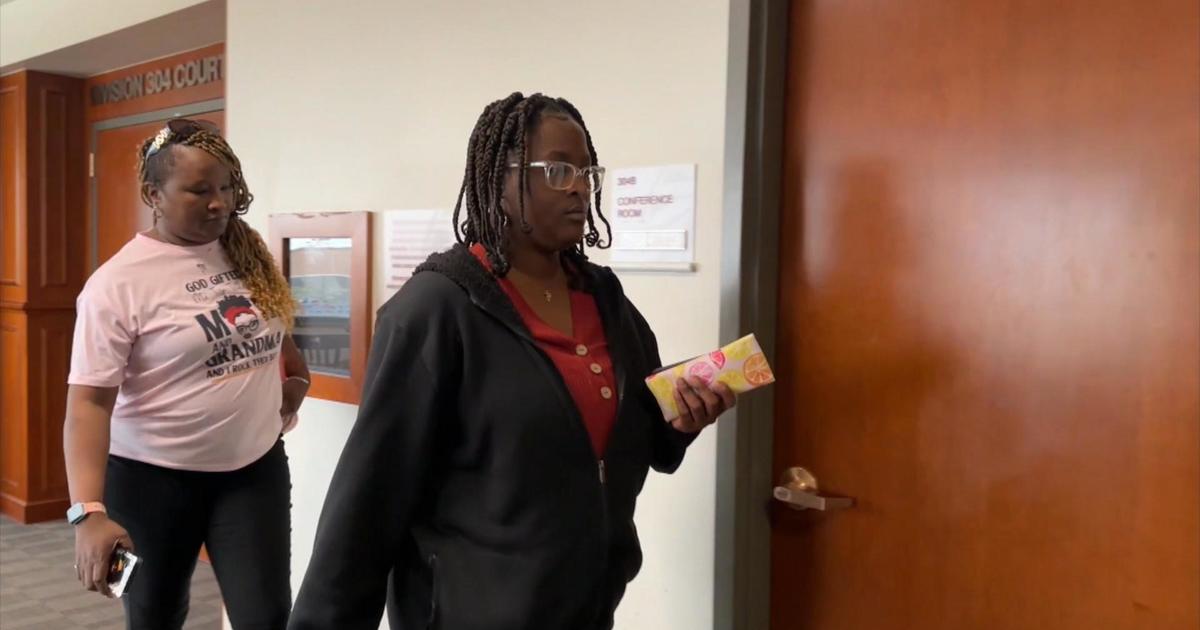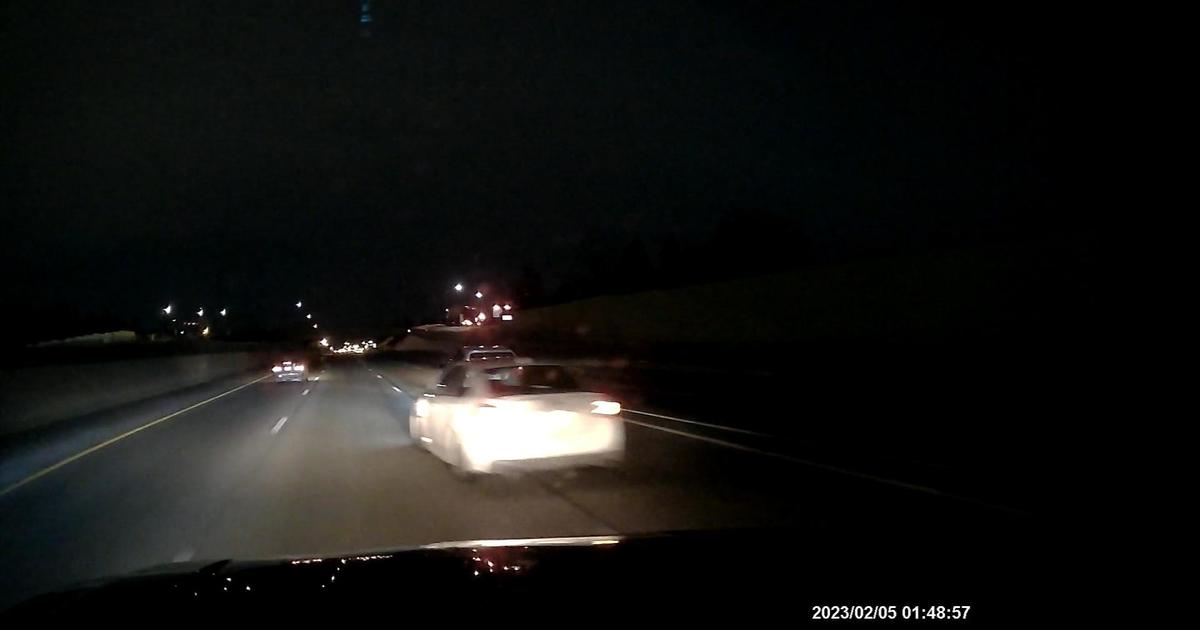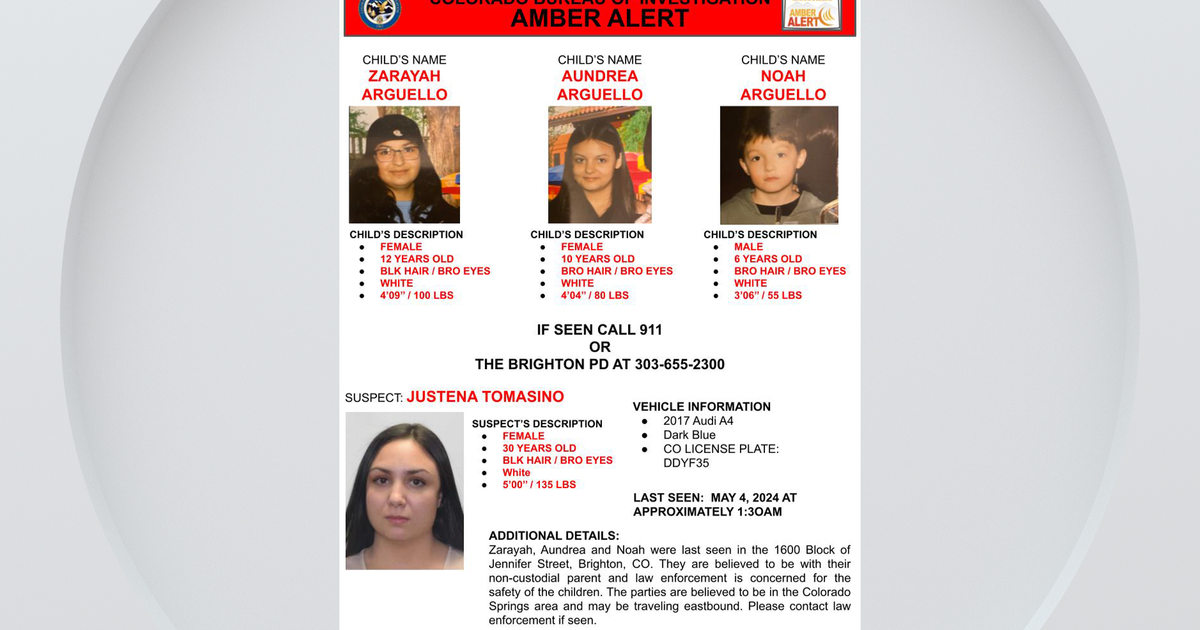Despite Driving Much Of Aurora Youth Violence, Latino Community Largely Absent In Conversations
AURORA, Colo. (CBS4)- Shooting after shooting after shooting. Twenty-twenty-one brought consistent waves of youth gun violence in Aurora. It's a feeling that rocks mother Judith Padilla to the core.
"I'm worried about my kids," said Padilla. "My fear is that I'll leave her at school in the morning, and then maybe when I came back for her, they'll have done something to her. That's my fear."
Padilla's daughter Kiara Aceves Padilla is a sophomore at Aurora Central. She was in class when six students were shot at Nome Park on Nov. 15, 2021.
"I feel like now in the society we live in, it's normalized," Aceves Padilla said.
There are a myriad of reasons we're seeing an uptick in youth violence in the most diverse city in the state.
"We have youth that are a lot more aggressive because they come from homes where it's learned behavior, they may come from homes where it's a generational gang tie," said Christina Amparan, the Youth Violence Prevention Program manager with the City of Aurora.
And it's complex. Amparan and other advocates told CBS4 that sometimes it's about protection at school and in the community, or students with high-risk behaviors who are committing the crimes. It could also begin with a fight at school or a rumor that escalates. Systemic inequities also play a role.
"It's important to overlay social structures, and social processes that have been going on for a long time and how those interplay with what we're seeing," said Beverly Kingston, the director at the University of Colorado's Center for the Study and Prevention of Violence.
The types of people committing crimes within the Aurora community also vary.
"It's youth between the ages of 10 to 24," Amparan said. "And we know that gang violence, gun violence primarily impacts the Black and brown community."
Francisco Gallardo with the Gang Rescue and Support Project tells CBS4 it also depends on what part of Aurora is being discussed.
"There are a lot of first, second generation, mostly immigrant Mexicano kids, and Central American kids, and it depends on what part of Aurora," said Gallardo. "There are definitely different points, because of so many apartment buildings, you do have Black youth, and what they're going through, even Black refugees that are also committing crimes and being victims of crimes."
Aurora Police Department data obtained by CBS4 shows that more Latino youth are involved in violence in the city than Black youth. In 2021, there were 125 juvenile Hispanic male victims of assaults, compared to 101 juvenile Black male victims. When looking at juvenile gun crimes, 93 of the victims were Hispanic males and 51 were Black males. And young Hispanic men saw 14 juvenile assault arrests, nearly one and a half times that of young Black men, who saw 10. But there is an exception when it comes to arrests. Last year Black boys saw 16 gun crime arrests, compared to nine arrests for Hispanic boys.
"I think the city right now is not really putting a lot of stock, putting a lot of resources into the Latino community when it comes to violence," Gallardo said.
While data shows that a lot of youth violence in Aurora involves the Hispanic/Latino community, CBS4 found there's a disconnect when reaching this group, and the city agrees.
"We do need to do a better job in involving the Latino voice," Amparan said. "I do think it has been missing in the past and we just need to ensure that we're mindful of violent behavior tremendously impacting the Latino community."
Padilla is one of few Latino parents who actively attends youth violence events.
"Regularly, there are very few Latinos who go to these events or reunions," she said. "I think a lot of time we're scared because of our legal status."
While Padilla puts her fears aside to bring her voice to the forefront, she said there are many other reasons why Latino parents are hesitant to address the escalating violence and why they're largely absent from the conversations, from language barriers to racism to mistrust of law enforcement, and Gallardo agrees.
"They're overworked or working a lot, or they have a fear of being engaged in the system," Gallardo told CBS4. "There's the issue of being able to be bilingual and speak to the kids and their families but it's also to understand the culture that we're dealing with."
Another barrier the Latino population faces is the lack of understanding of how the American system works.
"Coming into the United States they're now having to deal with a very different law enforcement process, a very different social services system, educational system," Amparan said. "That leads to the lack of being able to connect or understand or even some level of fear in reaching out to some of these organizations."
Colorado Crime Survivors Network founder Sharletta Evans told CBS4 that while the decades-long work of Black leaders has been effective, it can still be a challenge to reach the Latino community. Evans said if there's a language barrier that means the organization then has to invest in a translator, but culturally there's often a disconnect.
"We were referred to four families, and with those four families, the language barrier, we weren't able to assist those teens, we would have to contact the youth to talk to the mom and vice versa with the mother and the father and it was just close to impossible to find them in the same place," said Evans. "It can be very much of a barrier if even those parents want us to help their children."
The Struggle of Love Foundation is one of several groups at the forefront of the issue in the city. While the foundation acknowledges there are difficulties reaching Latinos, they're starting to break through some barriers by building relationships with Latino-led organizations.
"Our organization I think has really been able to knock down some of those stereotypes, and some of those things that lead to mistrust because they see us doing so many things for everyone, including brown," said Jason McBride, a secondary violence prevention specialist with the foundation.
Historically, a lot of the people leading the conversations on Aurora youth violence have been Black and many resources have been geared towards the Black community, even on the city level.
"As a society, we've been having a lot of conversation about racial issues, and we just need to ensure that we're expanding those conversations to include other ethnicities in our community to include the Latino community," Amparan said.
Gallardo said while outreach to the Latino community begins with language, there's much more to reaching this disconnected group.
"Right now it has a very Black and white binary, which is good though, Black youth and Black families deserve it, but so do the Latinos families as well," he said. "Having a flyer in Spanish is not enough, you have to be bicultural, you have to speak to our values in order to reach that community. "
Gallardo said it begins with meeting the Latino community where they're at.
"They have to be able to reach us in a way that makes sense for us culturally," he said. "If it's at the school, cool, if it's at the churches, that's where we need to go."
With the rising numbers, advocates believe we not only need to understand the Latino community on social, economic, and political levels, but also from a bi-cultural and bilingual lens, which includes cultivating Latino leaders.
"You're always going to miss your key populations unless you're really intentional about learning the cultural proficiency you need to be reaching out to people and engaging the," said David Bechhoefer, a researcher with the University of Colorado's Center for the Study and Prevention of Violence.
In 2021, the police department and the city invested over $300,000 into intervention and prevention of youth violence, and this year they hope to exceed that by investing over $500,000. While they currently don't have anything specifically geared towards the Latino community, Amparan said all their services and events are now in Spanish. The city funding does get divided and granted to many of the local organizations working to address youth violence.
"Who are those Latino voices that we can help elevate, to ensure that they're at the table that they're facilitating those conversations," she said.
Amparan said the city is working to better include the Latino community through a Youth Advisory Council that was formed in May 2021. So far this year, the council has held quarterly service projects, and case management meetings. In June, the group is also planning a unity walk for gun violence awareness week.
"They're engaging some of their Latino friends, some of their Black friends, some of their Asian friends. They recognize that it's important and it's critical for us to have different representation at the table," said Amparan. "And what's also happened is their Latino parents have also started to reach out to other parents to come up to some of our pop-up events, or event to create a parent council."
Amparan said the more they continue to give Latino parents an opportunity to play a role in an environment they're comfortable in, the more they're going to be able to mobilize and activate other parents. And to make progress, Gallardo believes all the stakeholders need to also acknowledge there's a power imbalance in Aurora.
"A lot of times we just look out for our own group and we don't support one another, but we really need to engage and really work with our kids, because they're doing stuff together and they're doing a lot of stuff to one another," Gallardo said.
Because at the end of the day, youth violence is impacting all Aurora communities.
"We need to learn from one another, it starts with us adults being that example, and wanting to know," Evans said.
Advocates like McBride said the Latino community has a lot more in common with the Black community than meets the eye.
"Your kids are dying, our kids are dying in the same exact way, a lot of time under the same exact circumstances, so let's figure it out together," he said. "We've been going at this separately for far too long, it's time to put our resources and our minds together."
Padilla hopes that with unity, everyone can help minimize the youth violence that continues to plague the city.
"We need to learn how to work together better, no matter what race we are, no matter what language we speak, because we need each other, we need that connection, that communication," she said.


